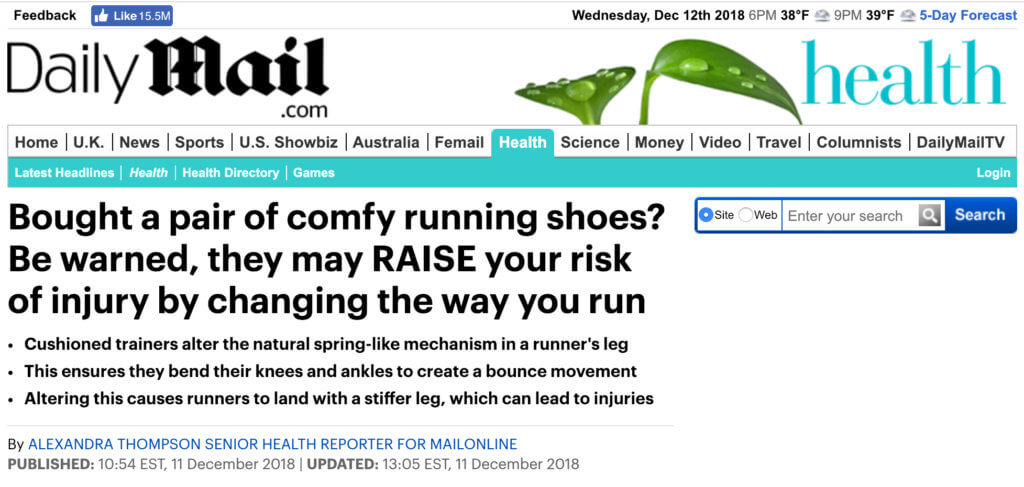Comfy, Cushioned Shoes Can CAUSE Injuries
This just in from the “Tell me something I didn’t know” department. 😉
The UK’s Daily Mail reports, “Comfy trainers RAISE the risk of injury.” You would think that a major publication telling readers why “maximalist shoes” are bad for you would make me happy, but read on and you’ll see why my glee is tempered with frustration.

(Click on the image, above, to see the article or find it on the Daily Mail site: https://www.dailymail.co.uk/health/article-6483593/Comfy-trainers-RAISE-risk-injury.html)
In short the article comments on research from Dr. Juha-Pekka Kulmala, and says:
[Between] 37 and 56 per cent of joggers experience injuries every year worldwide.
These injuries are thought to largely occur due to the vertical force that is created when a runner’s foot hits the ground.
To reduce this, many trainer manufacturers have added cushioning to their shoes’ soles, however, there is no evidence that this actually prevents injuries.
…Runners’ feet hit the ground harder when they were wearing cushioned trainers.
A video analysis showed the runners bent their knees and ankles less when they wore the cushioned shoes, which caused their bodies to slow down quicker and placed extra stress on their legs.
Now, this shouldn’t be news to people familiar with Xero Shoes, or this site, or the myriad studies done showing the problems with cushioned footwear and the benefits of truly minimalist shoes (not shoes sold with “minimalist” in the name, but without the same design principles.
So, on the one hand, I’m thrilled to see the truth in print.
On the other hand, this article does the same thing that others of this type have done, namely:
- Makes it seem like the bad control “the Brooks Ghost 6” is good for you, since it’s better than the Hoka Conquest.
- Paints the picture that there’s actually a debate, or a value for what we affectionately call “foot coffins” (any shoe that doesn’t let your foot bend, flex, move, feel).
In the article, Dr. Kade Paterson, a podiatrist at the University of Melbourne, says:
‘As a sports podiatrist, I’ve seen patients who’ve reported improvements with maximalist running shoes and others who’ve got injured in them so there probably isn’t a one-size-fits-all approach.’
Dr. Paterson added the results do not suggest runners should ditch cushioned shoes entirely and said ‘like many health-related things, we should be somewhere in the middle’.
The only way you can come to that conclusion is if you do something else that most articles of this type do:
- Don’t reference the research on true minimalist footwear, like that done by Dr. Irene Davis or Sarah Ridge or Isabel Sacco and others. This research paints a compelling picture for why natural movement, well, is better than shoving your foot into something that’s not foot-shaped, not flexible, has elevated heels with flared soles, and too much padding. You know, like the Brooks Ghost 6.
Even more absurd is the warning given at the end of the article:
Dr. Kulmala has previously warned about the trend of barefoot running, which he only recommends if you land at the front of your feet. Most people land on their heels, which creates a larger force and therefore needs more cushioning, he added.
ARGH!
Talk about missing the point. Or putting the cart before the horse. Or confusing cause and effect. Or some better metaphor or analogy than I can think of now.
Harvard’s Dr. Daniel Lieberman and others have shown that putting padding under your heel is what encourages heel striking to begin with, and that running barefoot tends to naturally shift you to a forefoot landing, which reduces those stressful forces on your bones and joints because you use your muscles, ligaments and tendons as the natural springs and shock absorbers they’re meant to be.
So, put it all together…
Look, I’m glad that the “myth of maximalism” is being dismantled, but I hope that the “truth of natural movement” gets more attention in the process.
The content of this post does not constitute and is not intended to be a substitute for professional medical advice, diagnosis or treatment. Always seek the advice of a physician or other qualified health provider with any questions or concerns you may have about your health or a medical condition.






